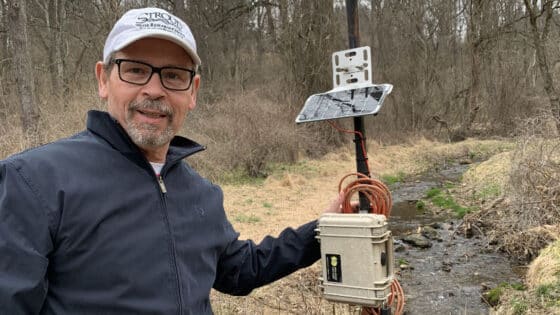Arscott, D.B., W.B. Bowden, and J.C. Finlay. 1998. Journal of the North American Benthological Society 17:210–227.
Abstract
Phosphorus has been added to a reach of the Kuparuk River, Alaska, from late June to mid August every year since 1983. The P-fertilized reach of the river is now extensively colonized by 2 bryophytes (Schistidium agassizii and Hygrohypnum spp.), whereas only S. agassizii is common in unfertilized reaches of the river. We compared photosynthesis rates of epilithic algae, S. agassizii, and Hygrohypnum spp. under reference and P-enriched conditions to extend our long-term records of bryophyte dynamics within the fertilized reach and to describe the physiological differences between major primary producers. Rates of primary production were determined from changes in dissolved oxygen concentration during light and dark incubations of algal and bryophyte samples in closed chambers. Net primary productivity per unit total chlorophyll a (CHLt a) was greater for epilithic algae (2.0-6.0 mg O2 mg-1 CHLt a h-1) than for bryophytes (0.2-1.7 mg O2 mg-1 CHLt a h-1). However, the greater biomass of the bryophyte community in the fertilized reach yielded area-specific productivity rates for Hygrohypnum spp. that were 2 to 4 times greater than areal rates of epilithic algal productivity. Bryophytes accounted for 80% of primary production in P-fertilized reaches but only 9% in reference reaches. Thus, increased bryophyte abundance in response to P increased total net primary production from 2.3 g C/h to 6.3 g C/h. Photosynthesis-irradiance (PI) parameters obtained by fitting data to a hyperbolic tangent model differed between bryophyte species, between reference and fertilized stream reaches, and over the season. Differences in PI relationships between S. agassizii and Hygrohypnum spp. suggest that they use different life strategies (subsistence vs opportunism, respectively) to exist in the arctic environment.


